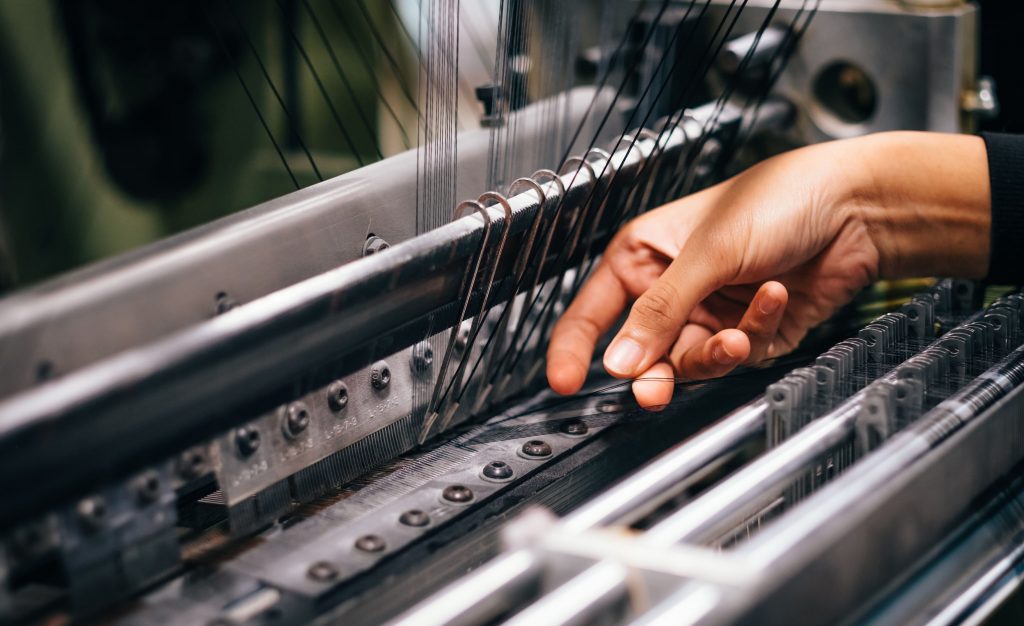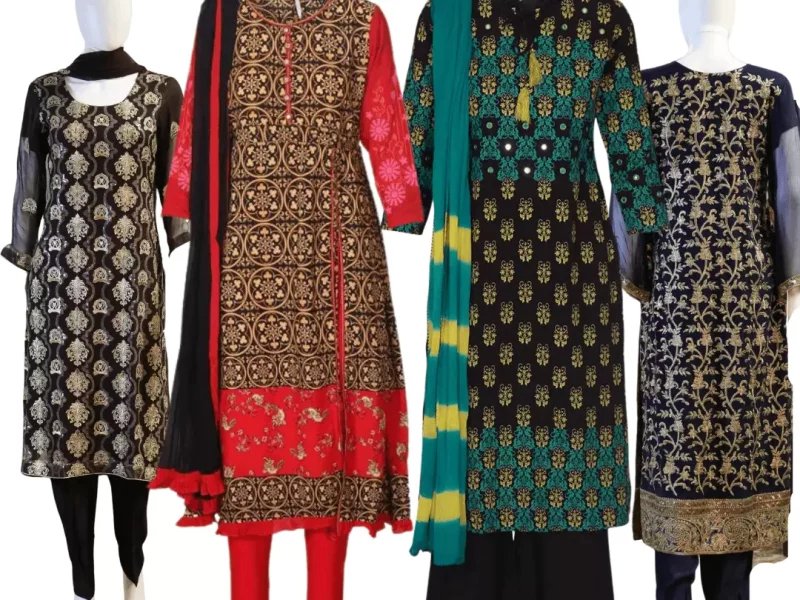In the period of 1760s to sometime between 1820 to 1840 Industrial revolution was the transition to new manufacturing processes. This transition brings changes like hand production methods to machines, new chemical manufacturing, and iron production were introduced. Factory systems begin to rise because new machine tools were developed. The textile industry was the main in the industrial revolution.

Textile Machines Used for Textile Manufacturing
Textiles and clothing have been a part of history and suggested the new quality materials as well as technology that is available for people in specific locations. The process of manufacturing and production works by converting naturally occurring and synthetic fiber into yarn, which eventually converts into the fabric. The fabric is then converted into textiles, which are finally used to make cloths. It’s a long process where a number of equipment are used with the latest technology and trends to make the process as efficient as possible. The textile industry is huge and has given rise to a brandrange of clothing and linen companies.
Textile industries use excessive numbers of machines and tools. One can broadly classify textile machines into two categories.
- Textile Processing machines
- Textiles working machines
The Process Machines of Textile
- Cloth finishing machines
- Knitting machines
- Fabric seaming machinery
- Crochet machines
- Lacemaking machines
- Label making machines
- Quilting machines
- Textile finishing machines
- Textile sourcing machines
- Textile sourcing machine
- Textile spinning machines
- Textile winding machines
- Tufting machines
- Weaving machines
- Zipper making machines
- Woolen mill machines
The Process of Textile Manufacturing
A number of processes are included in textile manufacturers’ fiber production, yarn productions, fabric productions, pre-treatment of fabric, dyeing, printing, and lastly, finishing treatments. Throughout history, methods of the textile industry evolved and progressed. There have been great transformations in the industry.
Let’s look at some machines that are commonly used in the industry.
- Cotton gin: cotton is the most used fiber in the industry. So it requires a machine that separates cotton from fiber from cottonseed. The cotton gin is not only responsible for separate cotton but also separate dirt, leaves, and impurities.
- Spinning machine: Before the thread can be woven together; the spinning machine spins the cotton into a piece of yarn or thread. Thus, thread or yarn are woven together in a piece of fabric.
- Knitting machines: Thread and yarn that are not weaved together are often knitted together.
Textile Working Machines
Following are the textile working machines used normally.
- Cloth measuring machine
- Cloth cutting machine
- Embroidery machine
- Industrial sewing machine
- Textile bleaching machine
- Textile trimmers machines
- Textile folding machine
- Laundry dryers
- Applique scaling machine
- Attaching machine
- Garment machinery
Materials used in the textile industry
Many materials are used in the textile industry with four main sources: animal, plant, mineral, and synthetic neon.
- Animal: wool, silk
2. Plant: cotton, flax, jute, bamboo
3. Mineral: asbestos, glass, fibre
4. Synthetic neon: nylon, polyester, acrylic, rayon
Cotton is still the natural fibre that is made in the industry. Types of machines found in the industry are usually intended for the processes that fabricate cotton-based fabric. Textile machines execute different operations at different stages. However, not all machines are required for each production line on the manufacturing site.
Standards of Textiles
Standards are maintained by manufacturers following International Organization for standard (ISO) committee 72 (textile machinery and accessories), also ISO 11111(safety requirements for machinery). The industry that needs to buy used machinery follows 13374.
Global Textile Industry
The Global textile industry growth continues to be driven by the world’s largest textile producing countries and top textile exporters in 2020. While China remains the world’s largest producer and exporter in the world, other textile producers EU, India, and the US are showing impressive annual growth rates over the years. With the fast-changing fashion market, the global textile industry will grow more.
Largest Textile producing Countries
China (52.2%), India(6.9%), US(5.3%), Pakistan(3.6%), Brazil(2.4%), Indonesia(2.4%), Turkey(1.9%), South Korea(1.8%), Thailand(1.1%), Mexico(0.9%).
Top Textile Exporters in world ($ billion)
China(11.8), EU(74), India(18.1), US(13.8), Turkey(11.9), south Korea(9.8), Taiwan (9.2), Vietnam(8.3), Pakistan (8.0), Hong Kong(74).
Future Trends
The rising demand for non-woven fabrics, mainly driven by downstream industries such as personal care. Packing, automotive, and construction will surely bring transformation in the future. Woven fabrics contain materials used in hygiene products, personal care, diapers, sanitary napkins, and adult incontinence. With the rising demand for nonwoven fabric, the nonwoven segment is expected to witness a faster growth rate in the coming years.



Hello
Our company needs Japanese animal wool processing equipment.
Best regends
Platinium Royal Textile LLC
Khusniddin Melikulov
hello
according to me, the information given in this blog is old and needs to be updated as you can see the updated information regarding this on my blog . As you can just click on the link given below to see
https://navbharattextiles.blogspot.com/2022/10/what-types-of-machines-used-in-textiles.html
We will update it when we have enough data